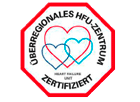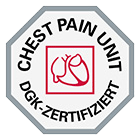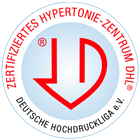Catheter-based heart valve procedures
Some types of heart valve disease can be treated with modern catheter-based procedures, which are much gentler on the patient. Nowadays, catheter-based procedures are used particularly in patients with valve disease affecting the left side of the heart. Older patients in particular can benefit from this type of procedure, as it causes significantly less trauma to the patient.

What are catheter-based heart valve procedures?
Catheter-based procedures can be used for certain types of heart valve disease - and may sometimes be able to eliminate the need for open surgery altogether. The procedure is similar to that of other catheter-based procedures, in that a catheter made of synthetic material is inserted via a blood vessel in the groin and advanced to the heart. These types of procedures are particularly suitable for treating heart valve disease affecting the left side of the heart (aortic valve and mitral valve).
What conditions are treated with this procedure?
Nowadays, catheter-based heart valve procedures are used mainly in patients with the following conditions:
- Narrowing of the aortic valve (aortic valve stenosis): in many cases, the valve between the left ventricle and the aorta can be replaced using a catheter-based approach. Less frequently (e.g. in congenital aortic stenosis in children), the stenotic valve may be widened using an inflatable balloon catheter. Both procedures can be performed without general anesthesia.
- Leakiness of the mitral valve (mitral valve regurgitation): in patients with this condition, a special metal clip ("Mitra-Clip") can be used to clip together the leaflets of the heart valve between the left atrium and the left ventricle, thus significantly reducing mitral regurgitation. This procedure is performed under general anesthesia.
- Narrowing of the mitral valve (mitral valve stenosis): The stenotic area can be widened using an inflatable balloon catheter. This procedure can be performed without general anesthesia.
- In some cases, heart valve disease affecting the right side of the heart (pulmonary valve and tricuspid valve), which is generally less common, can also be treated using catheter-based procedures, for instance when one of the valves is narrowed and needs to be widened.
When should catheter-based procedures be used?
Heart valve disease can lead to excess strain being placed on the heart muscle, which may result in heart failure. Particularly in cases where normal valve function has been significantly impaired, surgery may be essential. However, as many patients with valve disease are elderly, conventional open heart surgery is usually avoided. This is because the surgical risks associated with conventional surgery, which involves opening the patient's chest and placing them on cardiopulmonary bypass (a heart-lung machine), are considerable. Nowadays, certain types of heart valve disease can be treated using catheter-based procedures, which are relatively gentle in comparison.
Although these procedures have become increasingly important over the past few years, two specific procedures stand out, mainly because the valve disease they treat is so common: the catheter-based replacement of a narrowed aortic valve (aortic valve stenosis) and the catheter-based approach to treating a leaky mitral valve (mitral valve regurgitation). In mitral valve regurgitation, some of the blood flowing from the left atrium into the left ventricle flows back into the left atrium.
What happens during catheter-based procedures?
Catheter-based interventions involving the heart valves differ in very specific ways, depending on the exact procedure being performed. The catheter-based treatment of aortic valve stenosis uses a femoral artery approach and involves the following procedural steps:
- After the area has been numbed using a local anesthetic, a small incision is made in the groin. A catheter is then introduced into the femoral artery, from where it is advanced to the heart.
- The physician uses imaging techniques to guide their movements while dilating the narrowed aortic valve using balloon inflation.
- Using the catheter-delivery system, the physician then advances a folded prosthetic valve to the correct location. The new valve is either delivered mounted on a balloon, and is expanded by inflating the balloon, or the valve self-expands once an outer sheath is removed.
- The physicians use cardiac ultrasound and x-ray imaging to check that the valve, which begins working immediately once deployed, is correctly positioned and functions properly.
- The catheter delivery system is removed, and the small incision closed.





